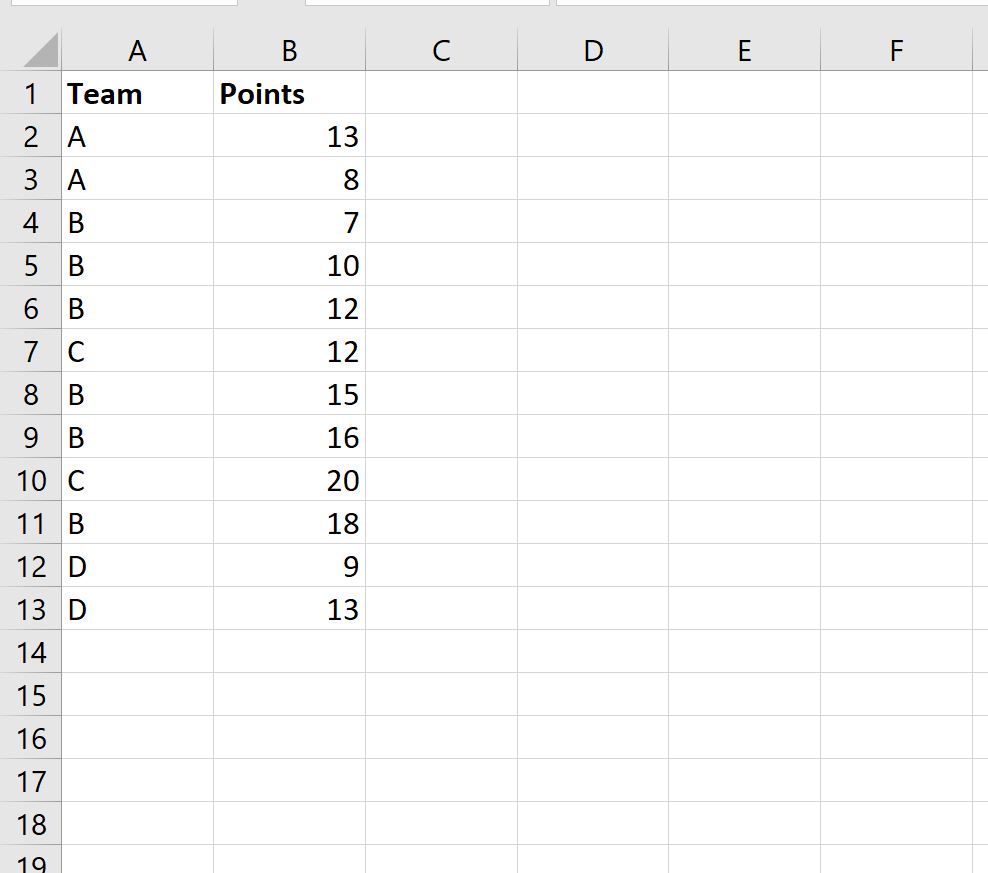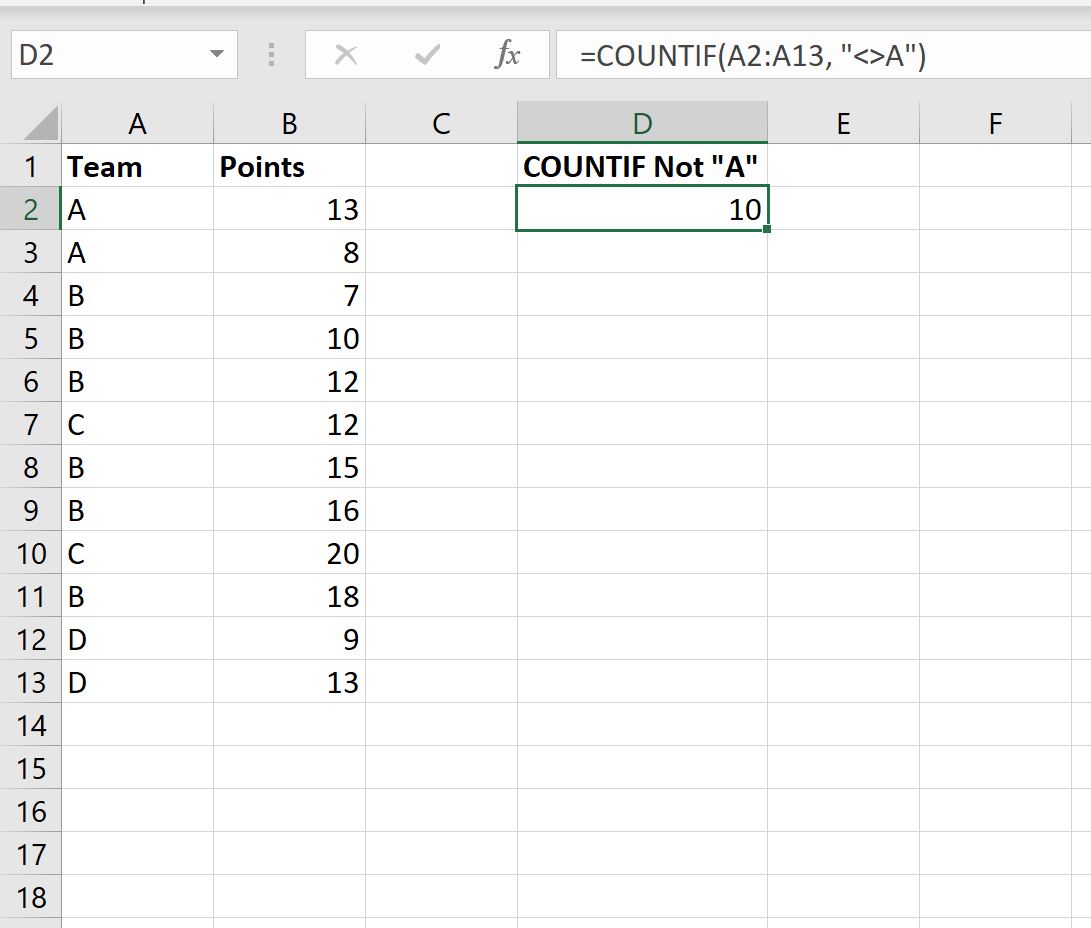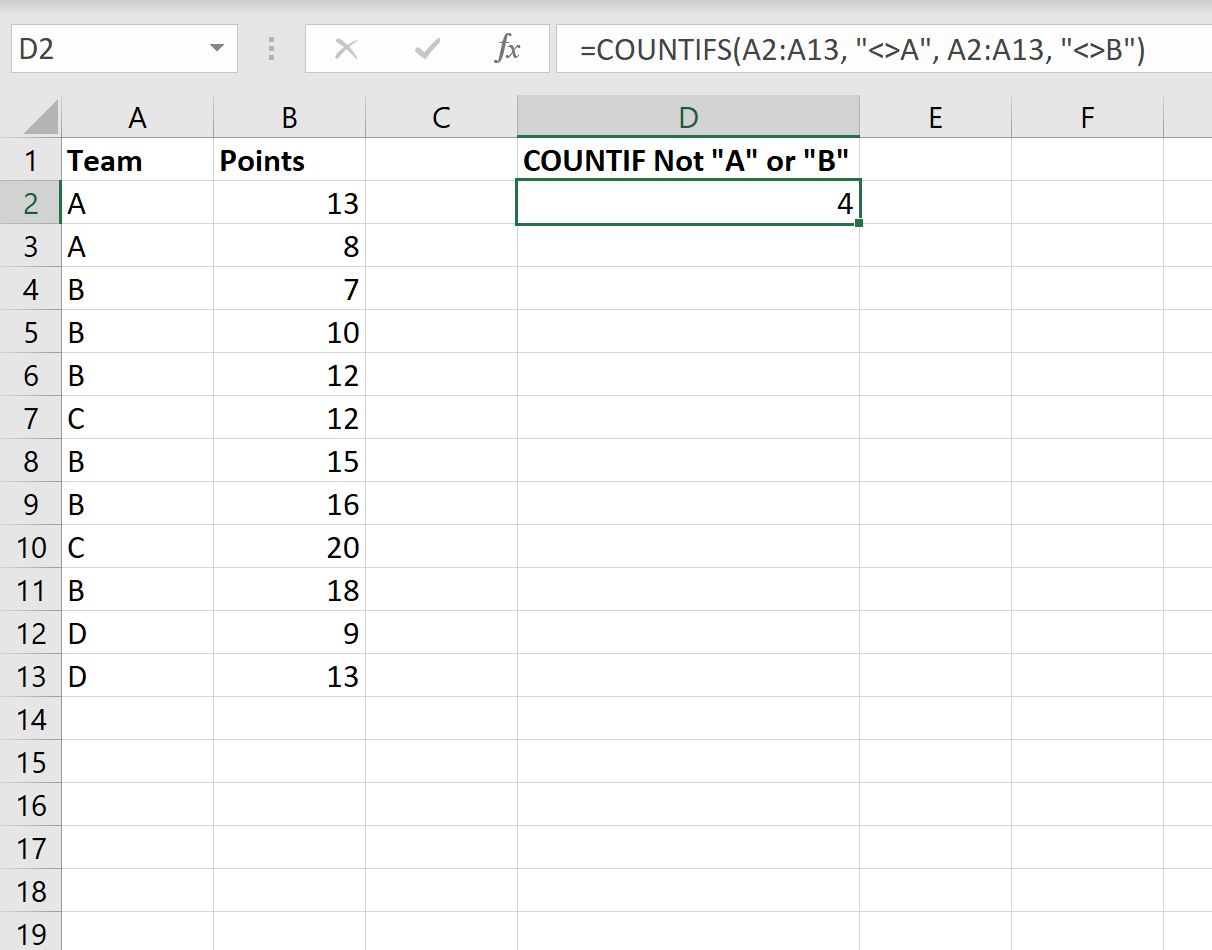You can use the following formulas to count the number of cells in Excel not equal to some value:
Method 1: Count Cells Not Equal to Value
=COUNTIF(A1:A100, "value")
This formula counts the number of cells in the range A1:A100 that are not equal to value.
Method 2: Count Cells Not Equal to Several Values
=COUNTIFS(A1:A100, "value1", A1:A100, "value2", A1:A100, "value3")
This formula counts the number of cells in the range A1:A100 that are not equal to value1 or value2 or value3.
The following examples show how to use each method in practice.
Example 1: Count Cells Not Equal to Value
Suppose we have the following data in Excel:

We can use the following formula to count the number of cells in the Team column that are not equal to “A”:
=COUNTIF(A2:A13, "A")
The following screenshot shows how to use this formula in practice:

This tells us that there are 10 cells in the Team column not equal to “A.”
Example 2: Count Cells Not Equal to Several Values
Once again suppose we have the following data in Excel:

We can use the following formula to count the number of cells in the Team column that are not equal to “A” or “B”:
=COUNTIFS(A2:A13, "A", A2:A13, "B")
The following screenshot shows how to use this formula in practice:

This tells us that there are 4 cells in the Team column not equal to “A” or “B.”
Additional Resources
The following tutorials explain how to perform other common tasks in Excel:
How to Count Filtered Rows in Excel
How to Use COUNTIF with OR in Excel
How to Use COUNTIF From Another Sheet in Excel